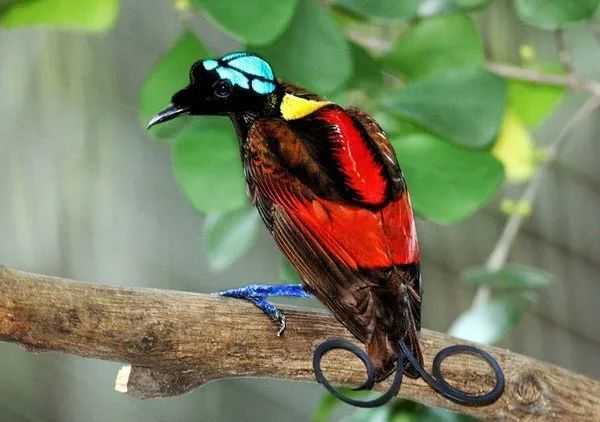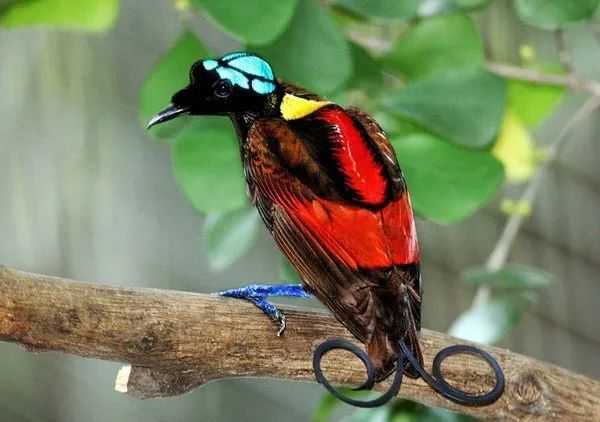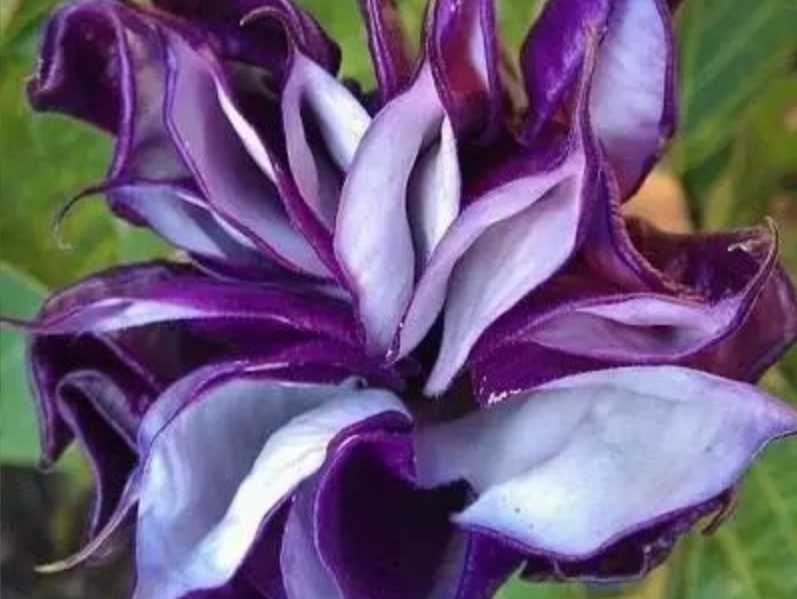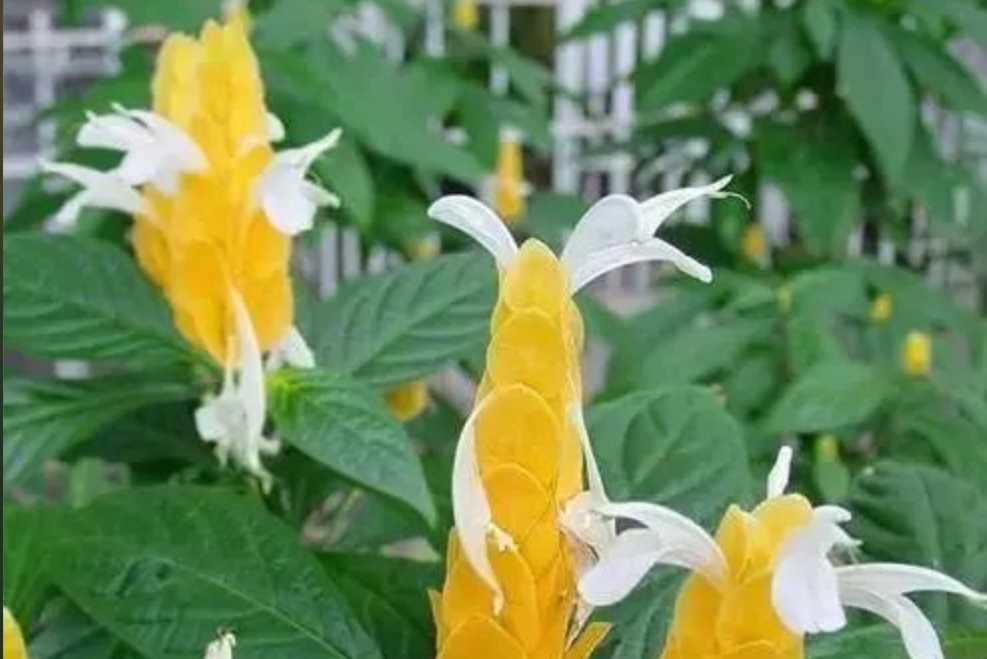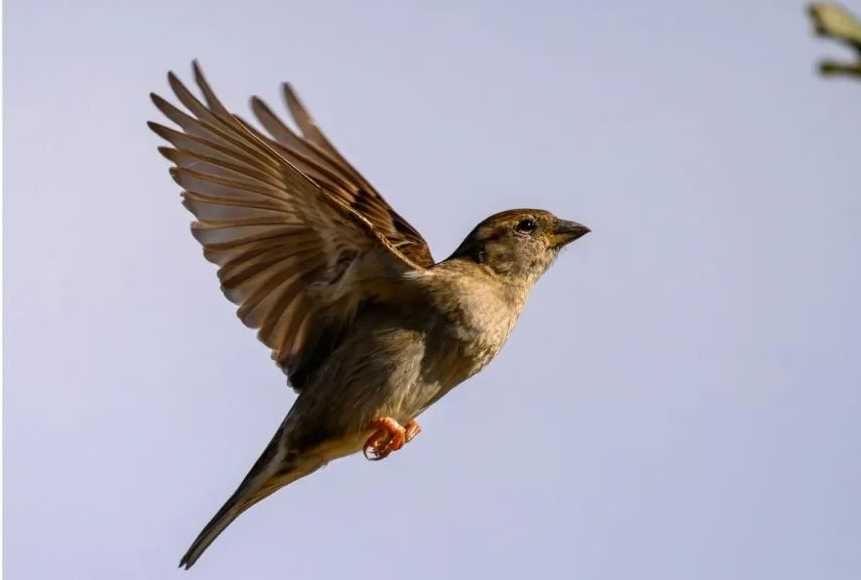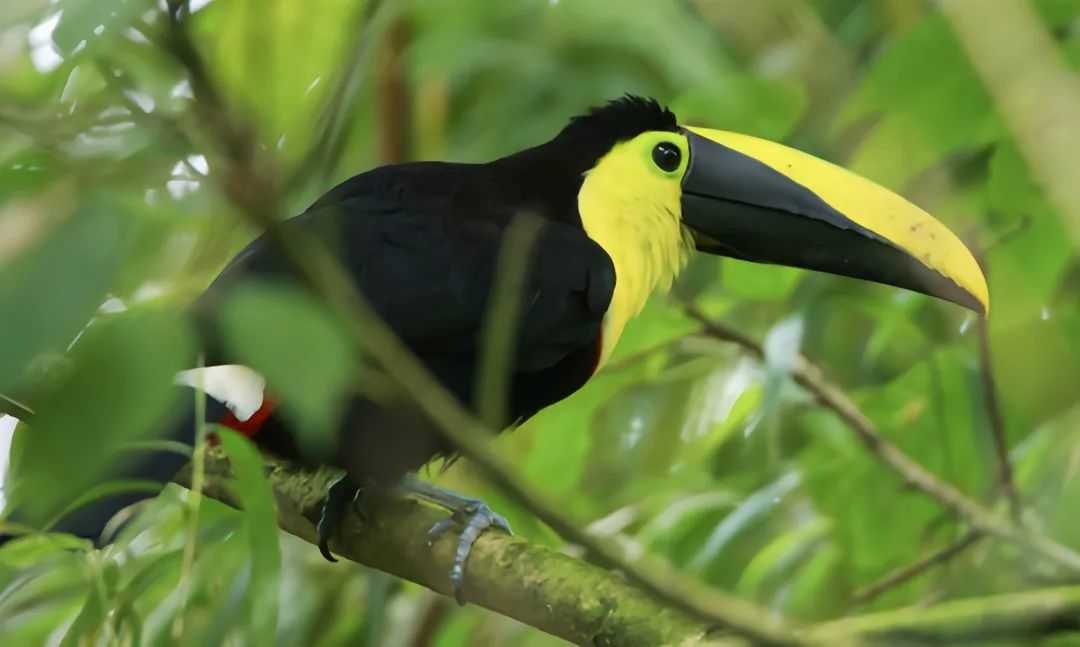Wilson's Bird-of-Paradise: New Guinea’s Living Masterpiece of Avian Artistry
Scientifically named Diphyllodes respublica, this diminutive bird-of-paradise inhabits New Guinea’s rainforests, measuring around 20 cm and feasting on fruits and insects. Hailed as one of the world’s most beautiful birds, its compact form is a canvas of nature’s boldest palette: emerald green, sunshine yellow, jet black, snow white, and vivid blue, seamlessly blended in an evolutionary tour de force.
Source: Images from the Internet, if there is any infringement, please contact the removal of
Two features set it apart in the avian world: a featherless crown of cobalt-blue skin etched with a black cross—a rare naked patch in birds—and tail feathers curled into perfect spirals, resembling delicate scrollwork. "It’s as if nature used a fine brush to paint this bird," says ornithologist Dr. Liaw Weng Sun. The bald head, far from a flaw, reflects ultraviolet light during courtship, while the spiral tails quiver in precise rhythms, creating optical illusions that mesmerize females.
During mating displays, males perch on forest clearings, fluffing their yellow breast plumes like a tutu while rotating their cobalt crown. "The contrast between the black cross and blue skin is so sharp, it looks like a digital design," marvels wildlife photographer Tim Laman, who documented their dances in Papua New Guinea. These performances, combining color, movement, and acoustic clicks from their tail feathers, were once thought mythical—until 19th-century explorers brought back specimens, leaving scientists speechless.
Native tribes consider the bird a spiritual guide, while modern researchers study its plumage at the molecular level: the green feathers derive from structural coloration, while the yellow is pure carotenoid pigment. "Every hue serves a purpose," notes evolutionary biologist Dr. Ruth Garrard. "The black cross may signal genetic health, and those spirals? They’re nature’s way of turning locomotion into art."
Threatened by deforestation, Wilson’s bird-of-paradise now thrives in protected areas where ecotourism funds conservation. For visitors lucky enough to witness its display, the experience is transcendent. "When it spins, those spiral tails seem to float without weight," says guide Mabel Oboi. "Locals say the bird taught humans to dance—watching it, you believe them. In a rainforest full of wonders, this little bird is nature’s own masterpiece, proving that sometimes, evolution chooses to paint with all the colors in the palette."
